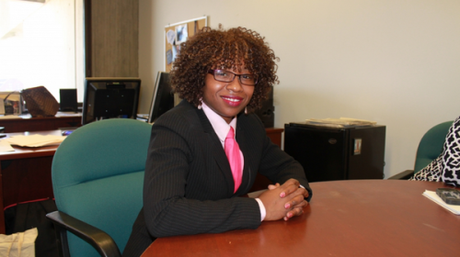
Boston’s new resilience officer
Huffington Post: Atyia Martin wanted to make Boston stronger. For the last four years, she tried to do that by running the Boston Public Health Commission’s Office of Public Health Preparedness. But the mandate of individual agencies is limited. Now, she’s trying something more holistic.The city on Tuesday appointed Martin as its first-ever “chief resilience officer,” a two-year position paid ($110,000 salary plus benefits) for by the Rockefeller Foundation’s 100 Resilient Cities program. The network, now 67 cities strong, aims to help cities adapt to meet modern economic, physical and social challenges. The new position will help Boston “withstand and bounce back from the ‘shocks’ — catastrophic events like floods, infrastructure failure and acts of terrorism — and ‘stresses’ — slow-moving disasters like persistent racial and economic inequality, lack of affordable housing and unemployment,” Mayor Marty Walsh said in a press release.
For Martin, who grew up in various neighborhoods across Boston, that mandate puts a particular focus on dealing with Boston’s history of racism. “The people who suffer the most after emergencies are disproportionally those who are considered the most vulnerable — people who are low-income, people with disabilities, the elderly, children,” Martin, 34, told The Huffington Post by phone on Monday. “Then we have the undercurrent of race.”
She plans to start with conversation by holding community meetings around the city. But Boston, pockmarked by its history of racism, remains largely racially segregated in many neighborhoods. Roxbury, nestled near Northeastern University (where Martin received her doctorate), is nearly 85.4 percent black or Latino, according to 2010 census data. White people comprised just about 7 percent of the neighborhood. By contrast, nearly 90 percent of residents on Beacon Hill — a wealthy enclave near Boston Common and the statehouse — were white.
“You have the best discussions when you have a nice mixture of people in the room across all races because it helps people see different perspectives,” Martin said. “It’s a challenge we’ll be able to overcome, but a challenge nonetheless.”
In 2013, after the Boston Marathon bombing, Martin helped coordinate the city’s response, treating victims for psychological and physical trauma. But as the world trumpeted the city’s resilience with the hashtag #BostonStrong, she watched violence with an even higher death toll rip through Boston neighborhoods. More than 100 people were shot in the five months that followed the bombing, according to The New York Times.
“The marathon bombing response was very well-coordinated,” said Martin, who lives in the Hyde Park neighborhood. “Juxtaposed with that, over 50 shootings that happened in the month after the bombing. You don’t have the same level of coordination and attention focused on people who suffer under chronic community issues like violence.”
DCG

